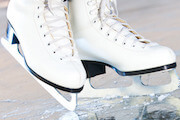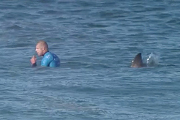The Basics
Wakeboarding is a sport that combines elements of waterskiing, surfing and snowboarding. It's like waterskiing on a small surfboard with bindings. Wakeboarding most likely began when surfers started being towed with a ski rope behind a boat. In 1985, a San Diego surfer named Tony Finn developed the Skurfer - a cross between a surfboard and a water ski. Other designers advanced the sport by making wakeboards that were neutrally buoyant and more suited for deep water entry. This made it easier for beginners to get up on the board. Wakeboarding is now one of the fastest growing water sports in the world - with approximately four million people participating.
Getting Started
Wakeboarding is really easy to learn, but it can also be an expensive sport to get started in. You need a boat, a wakeboard, bindings, a life jacket and a body of water. If you don't have a lot of cash, you could try the sport out by taking a lesson and renting some gear for the day. Always make sure you receive instruction from someone who knows what they're doing. For a list of wakeboarding camps and schools across the United States and around the world, head to www.wakeworld.com.
Lingo
If you're going to enter the wet and wild world of wakeboarding, you'll need to know how to talk the talk. Here's some wakeboarding lingo to get you started.
- Air Raley - When a rider hits the wake and fully extends his or her body, allowing the legs, feet and board to rise above the head.
- Butter - A term used to describe smooth water.
- Durf - Any fall. The harder the fall, the bigger the durf.
- Fat Sack - A sack that is filled with water and placed in the boat to make the wake bigger.
- Tantrum - When a rider approaches the wake backside and does a back flip.
- Wake to Wake - When a rider does a trick where they take off from one wake, and land on the other.
Related Stories:
- Wakeskates
- Froggy Soven - Wakeboarder
- Suit Up In These Boys' Swimsuits
- More Extreme and Action Sports
































